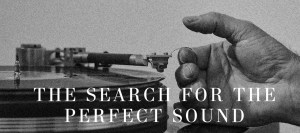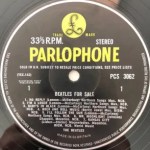 Hot Stamper Pressings of The Beatles for Sale
Hot Stamper Pressings of The Beatles for Sale
Reviews and Commentaries for the Music of The Beatles
Updated 2023 — See Below
On the Yellow and Black Parlophone label! This is best sounding early label pressing we have ever played. Not a Shootout Winner, but a perfectly enjoyable copy of one of the best sounding Beatles albums we play on a regular basis.
NEWSFLASH FROM 2022
We just played another original pressing of For Sale and this copy had a Triple Plus (A+++) side one, mated to a Double Plus (A++) side two. For Sale is still the only studio album with top quality sound on the original pressing that we have ever played, but now we can say with some authority that if you have a bunch of originals, you might just have one with killer sound like the one we had. There was a later pressing that also earned our top grade, a subject we touch on in this commentary for Kind of Blue.
NEWSFLASH FROM 2023
We’ve just played another original pressing of For Sale in a shootout and amazingly it earned Triple Plus (A+++) grades for its sound on both sides. Most original Beatles pressings on the early label do not even qualify to make it into our shootouts. Their mastering is so crude, congested and distorted that the sound simply cannot be taken seriously on a modern hi-fi rig. On a jukebox, maybe. Mine’s in the shop.
Note that this label information, like most label information, is not as helpful as it might seem. The Yellow and Black Parlophone label was used in the UK all the way up until 1969, during which time a lot of copies of For Sale, first released in 1964, were sold. In other words, if you want to find a great sounding pressing of For Sale on the early label, you have your work cut out for you.
This finding about For Sale is precisely why live and learn is our motto.
We don’t know it all, and we’ve never claimed that we did. We constantly learn things about pressings in our daily shootouts. That should not be too surprising, as record shootouts are the only way to learn anything about the sound of records that’s actually worth knowing.
Start doing your own experiments and your record knowledge might just take off the way ours has. 99% of what we think we know about the sound of records we’ve learned in shootouts over the course of the last twenty years.
Here is our advice on getting started.
Before this, the only Beatles record we would sell on the Yellow and Black Parlophone label was A Collection of Oldies… But Goldies. That title does have the best sound on the early label. In numerous shootouts, no Black and Silver label pressing from the ’70s was competitive with the best stereo copies made in the ’60s.
Until now, it was clearly the exception to our rule. From With the Beatles up through Yellow Submarine, the best sounding Beatles pressings would always be found on the best reissue pressings.
Here are the notes for the best sounding For Sale on the early label we played in our 2022 shootout.
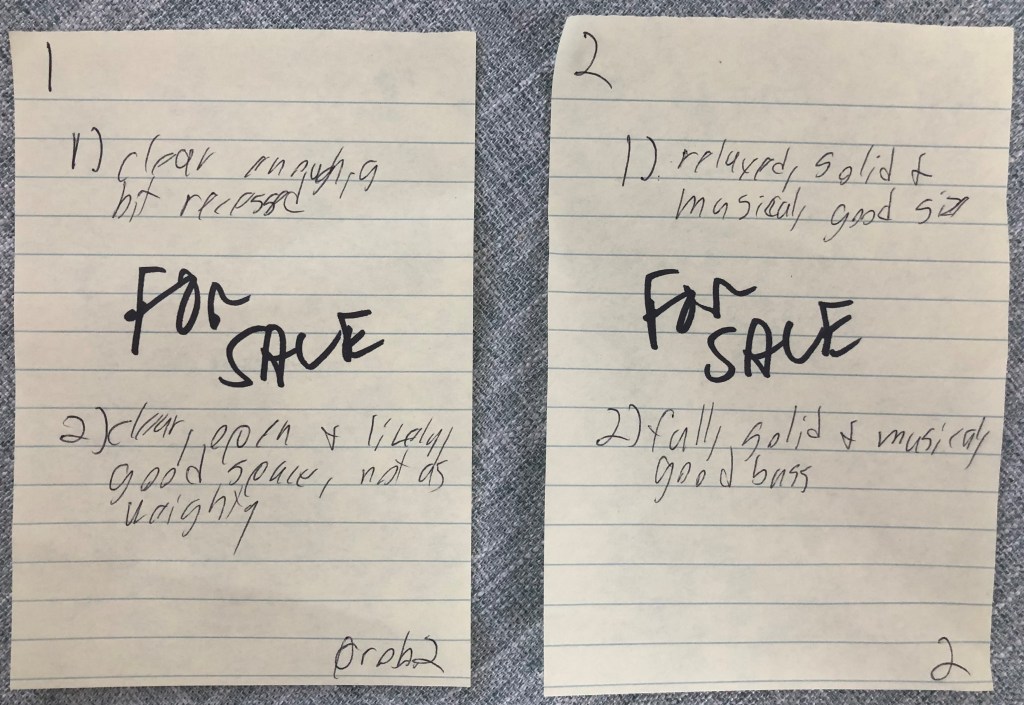
For those who have trouble reading our writing, the notes say:
Side One
- Track one is clear enough, a bit recessed.
- Track two is clear, open and lively, with good space, but not as weighty as the best.
Side Two
- Track one is relaxed, solid and musical, with good size.
- Track two is full, solid and musical, with good bass.
We Was Wrong
A very good sounding record, with few of the problems we heard on the other early label Beatles pressings we’ve played in the past. Most of them had the kind of old record sound — compressed, congested, harmonically distorted, bandwidth limited, etc. — that kept them from making the cut.
But that’s the reason to play records, not judge them by their labels, right? How else would you possibly learn anything about their sound? And you have to play them head to head against other copies, a normally crude process we’ve refined over the last twenty years into a science we like to call the Hot Stamper shootout.
The Bottom Line
Will we ever buy another one? Probably not. [Ah, but we did!] The right later label pressings always win the shootouts, and the second tier copies on the later label will tend to be cheaper to buy, in better condition and pressed on quieter vinyl.
If you really must have an early label pressing, like this guy, you will have no trouble finding one in good shape. Well, maybe not no trouble, because buying records over the internet is a major pain. Let’s just say it can be done.
Cleaning the record is another matter. For that you need a lot of expensive equipment and plenty of time on your hands.
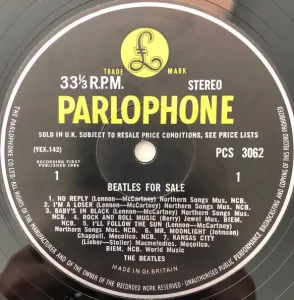 Some Current Thoughts on Old Paradigms
Some Current Thoughts on Old Paradigms
It is our strongly held belief that if your equipment (regardless of cost) or your critical listening skills (regardless of the esteem that you may hold yours in) do not allow you to hear the kinds of sonic differences among pressings we describe, then whether you are just getting started in audio or are a self-identified Audio Expert writing for the most prestigious magazines and websites, you still have a very long way to go in this hobby.
Purveyors of the old paradigms — original is better, money buys good sound — may eventually find their approach to records and equipment unsatisfactory (when it isn’t just plain wrong), but they will only do so if they start to rely more on empirical findings and less on convenient theories and received wisdom.
A reviewer we all know well was clearly stuck years ago in the old paradigm, illustrated perfectly by this comment:
It’s not my pleasure to be so negative but since I have a clean UK original (signed for me by George Martin!) I’ll not be playing this one again. Yes, there are some panning mistakes and whatever else Martin “cleaned up” but really, sometimes it’s best to leave well-enough (and this album was well-enough!) alone.
We are not aware that he has subsequently recognized the error of his ways. We can’t imagine how anyone can have a system in this day and age that can obscure the flaws of the original Parlophone pressings of Rubber Soul (or any other Yellow and Black label Parlophone pressing for that matter). The reviewer quoted above apparently does (as do some of our customers, truth be told), but we have something very different indeed. One might even consider it the opposite of such a system.
Our system is designed to relentlessly and ruthlessly expose the flaws of every record we play. Only the best of the best can survive that level of scrutiny. Our system (comprising equipment, set-up, tweaks, room, room treatments, electricity) operates at the highest level of fidelity we are able to achieve. In addition, we are constantly making improvements to our playback system in search of even better sound.
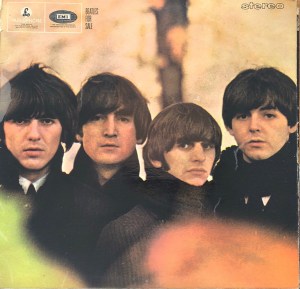
Real Progress
But wait a minute, who are we to talk about being easily fooled? Bear in mind that as recently as 2000-something we were still recommending the DCC and other Heavy Vinyl pressings, records that I can’t stand to listen to these days. My system couldn’t show me how sterile and lifeless they were then, but it sure can now.
It’s amazing how far you can get in 10 years if you’re obsessive enough and driven enough, and are also willing to devote huge amounts of your time and effort to the pursuit of better audio. This will be especially true if you are perfectly happy to let your ears, not your brain, inform your understanding of the sound of the records you play.
If we approached this hobby like most audiophiles, that money buys good sound and original pressings are sure to be the best, there would be no such thing as Hot Stampers.
Old thinking and wrong thinking can really slow down your progress.
Follow our advice and you will be amazed at the positive changes that are bound to come your way.
Better ears lead to better stereos, but some stereos make it hard to develop better ears.
That’s why I made so many mistakes and learned so little in my first twenty years as an audiophile.
Yes, I made a lot of mistakes, but taking an empirical approach to this hobby practically guarantees that that I would eventually find a better way.
Now I know that making mistakes is a key to progress. Thank goodness for that, because I’ve sure made my share of them.
(more…)
 The Music of Claude Debussy Available Now
The Music of Claude Debussy Available Now